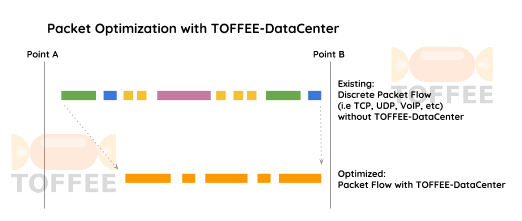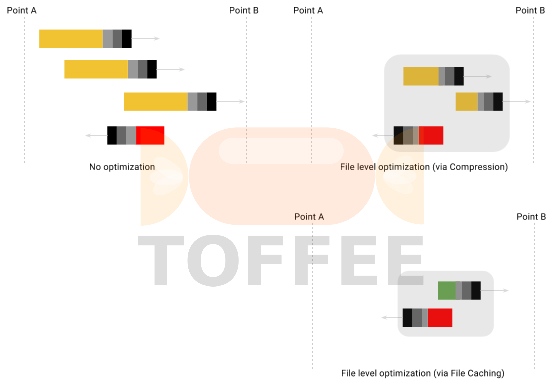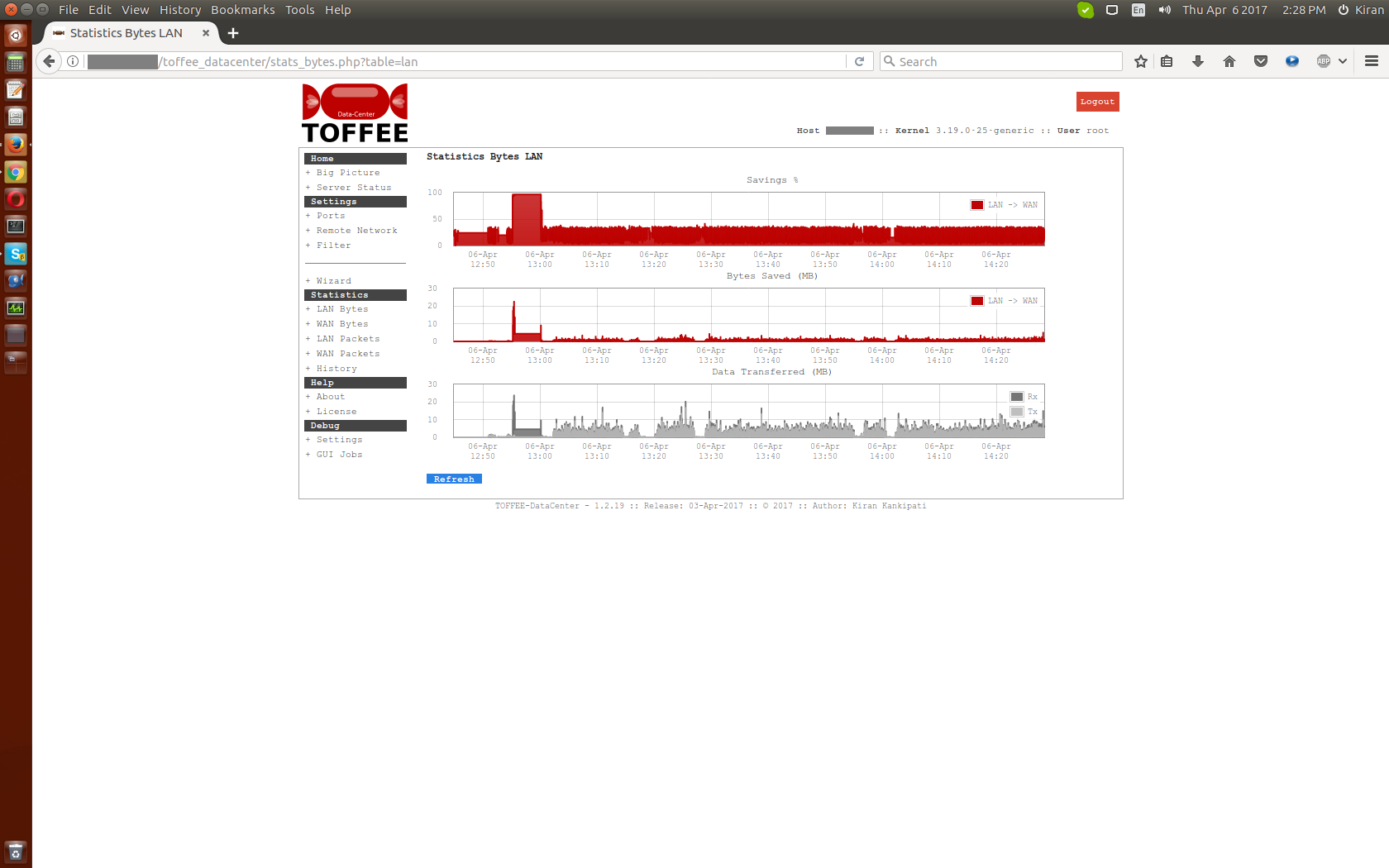DOCUMENTATION 》 TOFFEE-DataCenter :: Features Supported
TOFFEE-DataCenter supported features (as on 18-Aug-2017):
- Web configuration GUI
- configuration/setup wizard
- management port
- live stats/performance monitoring/reports
- Command Line Interface CLI
- Compression
- LZO
- ZLIB
- Deduplication (protocols/applications supported)
- HTTP
- HTTPS
- SSL
- SSH
- DNS
- MDNS
- FTP
- NFS
- SMB
- ICMP
- NetBIOS
- SNMP
- SMTP
- SSDP
- POP
- LDAP
- NBSS
- Google QUIC
- NTP
- Google Hangouts (gtalk)
- Skype
- SIP
- RTP/RTCP
- IMAP
- IPMI
- IAX
- MySQL (MariaDB)
- PostgreSQL
- Torrent
- Teamviewer
- VNC
- Telnet
- server CPU load-share/throttle/scale-up
- dynamic MTU optimization: Refer1, Refer2, Refer3
- Deduplication w.r.t CPU/Hardware scale-up
- data packaging: Refer1
- hardware offload support: Refer1
Here is a quick architectural perspective of how TOFFEE-DataCenter optimizes incoming discrete packets:

Features yet to be supported in the future:
- a complete TOFFEE-DataCenter FreeBSD port
- Webmin support/integration
- L4 filter (optional/low-priority)
- Deduplication
- GlusterFS
Suggested Topics:
TOFFEE-DataCenter - WAN Optimization
Categories
| 💎 TOFFEE-MOCHA new bootable ISO: | Download |
| 💎 TOFFEE Data-Center Big picture and Overview: | Download PDF |
TOFFEE-DataCenter as a VNF for NFV ↗
Saturday' 13-Mar-2021
TOFFEE Data-Center optimized Internet of Things (IoT) Platform ↗
Saturday' 13-Mar-2021
Featured Educational Video:
CDN Content Delivery Networks - Types ↗
Saturday' 13-Mar-2021
Research :: Optimization of network data (WAN Optimization) at various levels:

Learn Linux Systems Software and Kernel Programming:

Hardware Compression and Decompression Accelerator Cards:

TOFFEE-DataCenter on a Dell Server - Intel Xeon E5645 CPU:







